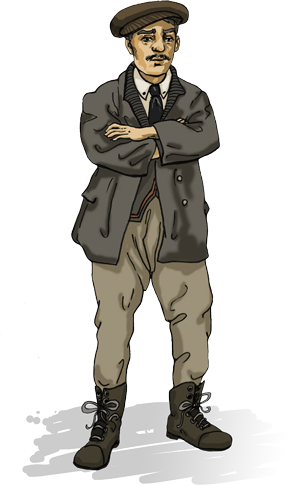-
Comeby train
-
Book your stay
-
Buy yourski & pedestrian pass

Book your stay



Friday 12 December updated on 12-12-2025 at 8:06
Friday 12 December updated on 12-12-2025 at 8:06
Sign up for our newsletter so you don’t miss anything in les Arcs !
![[Translate to English:] [Translate to English:]](/fileadmin/user_upload/headergeants.jpg)
Often considered a natural rampart, the Alps are however not impassable. Through the presence of the Petit-Saint-Bernard, Bonhomme and Iseran passes, the Haute-Tarentaise valley has brought together important places of passage since prehistoric times. Since Antiquity, the Petit-Saint-Bernard pass has been a link between local Alpine populations. During the Roman conquest, Emperor Augustus completed the construction of the Roman road. Troops, sovereigns, pilgrims, merchants, bankers and peddlers cross paths on the roads. At the end of the Middle Ages, the County of Savoie controlled five crucial passes, including the Petit and Grand Saint-Bernard.

“My name is Francesco Séconi. Born in Vicenza, I crossed the Alps in 1889 to find work in France. Near Bourg Saint Maurice, the forts were under construction, and I was quickly hired. When I started my job, I was delighted to find many of my compatriots who had come from different regions of Italy. The work was exhausting, the days endless, and in all weather conditions, thousands of tons of scrap iron and concrete were used. Eventually, I stayed in France, settled here, and started a family.”
The construction and architecture of forts adapted to the constant evolution of artillery.
Key dates of these technological breakthroughs:
1858: The invention of the rifled cannon increased power, precision, and doubled the weight of projectiles.
1873: The adoption of breech-loading allowed the modernization of old bronze cannons, such as the 138 Reffye, which was present in most forts.
1877: Adoption of the new steel cannon, the 155 de Bange, with a range of 9 km.
1878: Adoption of the new steel cannon, the 120 de Bange, with a range of 8 km.
1885: Adoption of a new explosive, "melinite," used in torpedo shells. Ten times more powerful than gunpowder, it required the reinforcement of some fortifications with special concrete.
1897: Adoption of the quick-firing 75mm cannon. Its revolutionary hydro-pneumatic recoil system entirely absorbed the recoil of the piece.
In 1913, the batteries of Courbaton and des Têtes were built.
In 1937, in response to the rise of fascism and Nazism, two strategic roads were constructed for the supply of men, food, and ammunition: one starting from Peisey-Nancroix and the other from Hauteville-Gondon. They were built by former fighters from the Spanish Civil War. The name "Route des Espagnols" still exists today for the one in Peisey-Nancroix.

It was the main means of communication between 1874 and 1914. It was still used even after the arrival of the telephone during the Second World War. Messages were transmitted using Morse code (invented in 1832). Light signals were produced by a lamp equipped with a shutter. A telescope was used for reception.